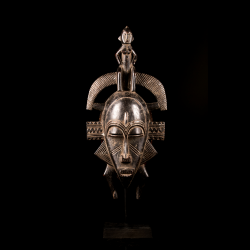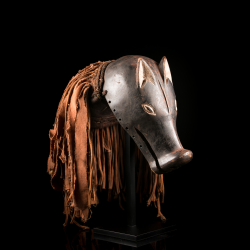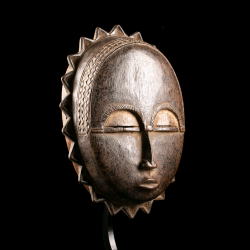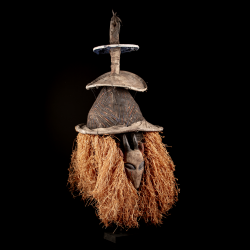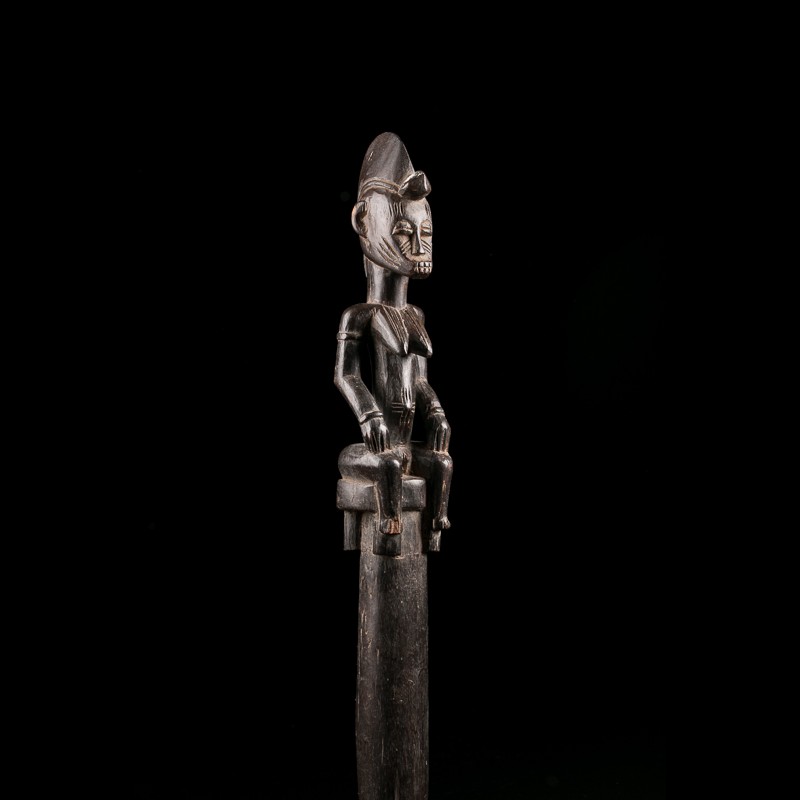























We know in Senufo African art a famous type of staff surmounted by a character called tefalipitya. Middle-aged men work the land, drumming their hoes in competition with other workers. The goal is to demonstrate their strength as workers, their speed and dexterity. The first to finish his trench is declared champion cultivator sambali meaning "master farmer".
He wins a trophy: the tefalipitya which means "hoe-worker" among the central Senoufo and tyekparipitya elsewhere. This staff is surmounted by a statuette representing pitya, a beautiful and single young woman. The champion also wins as a reward the most beautiful young girl in the village as a woman.
Winning the title of sambali, which he will retain until his death, is the highest honor a Senoufo can obtain. Thus, once deceased, his tefalipitya staff is placed outside his hut to watch over his spirit.
Remarkable objects of traditional art, tefalipitya staff also have additional uses and meaning in Senoufo communities: they are used during Poro ceremonies as rewards for initiates who master the secret language of this initiatory society based on agrarian rites. .
We see them appear in the company of kpeliye masks during harvest festivities.
Finally, they serve as weapons to ward off evil spirits that aim to disrupt ritual ceremonies.
If we refer to the contextual photos, we observe the two young women, one of whom wears the famous Senufo headdress that is found on the sculpted statuette, and the other wears scarifications around the navel and on the chest, also chiseled in the figure.
Support included.
Data sheet
You might also like

We know in Senufo African art a famous type of staff surmounted by a character called tefalipitya. Middle-aged men work the land, drumming their hoes in competition with other workers. The goal is to demonstrate their strength as workers, their speed and dexterity. The first to finish his trench is declared champion cultivator sambali meaning "master farmer".
He wins a trophy: the tefalipitya which means "hoe-worker" among the central Senoufo and tyekparipitya elsewhere. This staff is surmounted by a statuette representing pitya, a beautiful and single young woman. The champion also wins as a reward the most beautiful young girl in the village as a woman.
Winning the title of sambali, which he will retain until his death, is the highest honor a Senoufo can obtain. Thus, once deceased, his tefalipitya staff is placed outside his hut to watch over his spirit.
Remarkable objects of traditional art, tefalipitya staff also have additional uses and meaning in Senoufo communities: they are used during Poro ceremonies as rewards for initiates who master the secret language of this initiatory society based on agrarian rites. .
We see them appear in the company of kpeliye masks during harvest festivities.
Finally, they serve as weapons to ward off evil spirits that aim to disrupt ritual ceremonies.
If we refer to the contextual photos, we observe the two young women, one of whom wears the famous Senufo headdress that is found on the sculpted statuette, and the other wears scarifications around the navel and on the chest, also chiseled in the figure.
Support included.
